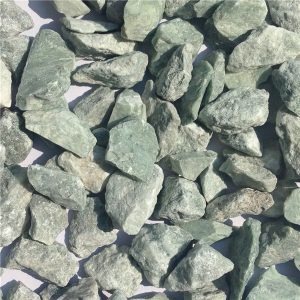Elevate Your Homes Entrance with a Cultured Stone Entryway
Introduction: The entrance to a home is a crucial element that sets the tone for the rest of the space. It is the first impression visitors have and can greatly impact the overall aesthetic appeal of the property. One popular way to enhance the beauty and functionality of an entryway is by using cultured stone. Cultured stone offers a versatile and durable option for creating stunning entryways that can elevate the curb appeal of any home. In this article, we will delve into the world of cultured stone entryways, exploring their benefits, design possibilities, installation process, and maintenance requirements. Benefits of Cultured Stone Entryways: Cultured stone, also known as manufactured stone or faux stone, is a cost-effective alternative to natural stone that offers numerous benefits for entryway design. One of the key advantages of cultured stone is its versatility in terms of colors, textures, and shapes. This allows homeowners to achieve a wide range of design styles, from rustic and traditional to modern and contemporary. Another significant benefit of cultured stone is its durability. stepping stones for sale from a mixture of cement, aggregates, and iron oxide pigments, cultured stone is designed to withstand the elements and maintain its appearance over time. This makes it an ideal choice for entryways, which are exposed to foot traffic, weather conditions, and other external factors. In addition to its aesthetic appeal and durability, cultured stone is also relatively lightweight compared to natural stone. This can simplify the installation process and reduce the structural requirements needed to support the stone. Furthermore, cultured stone is typically more affordable than natural stone, making it a cost-effective option for homeowners looking to enhance their entryway without breaking the bank. Design Possibilities: When it comes to designing a cultured stone entryway, the possibilities are virtually endless. Cultured stone is available in a wide range of colors, textures, and shapes, allowing homeowners to create a custom look that suits their personal style and complements the architecture of their home. For a traditional or rustic aesthetic, earthy tones and rough-hewn textures can be used to create a warm and inviting entryway. On the other hand, sleek and modern entryways can be achieved by using smooth, monochromatic cultured stone in neutral colors like gray or white. In terms of shapes, cultured stone can be cut and shaped to create various patterns and designs, such as herringbone, stacked stone, or random ashlar. These patterns can add visual interest and depth to the entryway, making it a focal point of the home's exterior. Installation Process: The installation of a cultured stone entryway typically involves several key steps that should be carried out by experienced professionals to ensure a successful outcome. The first step is to prepare the surface of the entryway by cleaning and inspecting it for any damage or imperfections. Any existing materials, such as siding or stucco, may need to be removed to create a clean and level base for the cultured stone. Next, a moisture barrier and metal lath are installed to protect the underlying structure and provide a secure surface for the cultured stone to adhere to. A scratch coat of mortar is then applied to the metal lath, followed by the application of the cultured stone veneers using a mortar mix. The stones are carefully placed and secured in the desired pattern, with grout or mortar joints used to fill in any gaps between the stones. Once the cultured stone veneers are in place, the entryway is allowed to cure for a specified period to ensure that the mortar has fully set. Finally, any necessary sealing or finishing touches are applied to enhance the appearance and longevity of the cultured stone. Maintenance Requirements: Maintaining a cultured stone entryway is relatively straightforward and requires minimal effort to keep it looking its best for years to come. Regular cleaning with a mild detergent and water can help remove dirt, dust, and other debris that may accumulate on the surface of the stone. Avoid using harsh chemicals or abrasive cleaners, as these can damage the finish of the cultured stone. In addition to cleaning, it is important to inspect the entryway periodically for any signs of damage, such as cracks, chips, or loose stones. Prompt repairs should be made to prevent further deterioration and ensure the structural integrity of the entryway. Sealing the cultured stone entryway can also help protect it from moisture, stains, and fading caused by exposure to the sun. Depending on the type of sealer used, reapplication may be required every few years to maintain optimal protection and appearance. Conclusion: A cultured stone entryway is a versatile and durable option for enhancing the curb appeal and functionality of any home. With its wide range of design possibilities, cost-effective nature, and low maintenance requirements, cultured stone offers homeowners a practical and stylish solution for creating a stunning entrance that sets the tone for the rest of the property. Whether you prefer a traditional, rustic look or a sleek, modern design, cultured stone can be customized to suit your personal style and complement the architecture of your home. By working with experienced professionals to install and maintain your cultured stone entryway, you can enjoy its beauty and durability for years to come, making a lasting impression on visitors and enhancing the overall value of your property. 